Search
Remove Ads
Advertisement
Search Results

Definition
Ajatashatru
Ajatashatru (c. 493/492 BCE - c. 462/460 BCE) was the second important king of the Haryanka Dynasty, who came to the throne of Magadha by deposing and executing his own father Bimbisara. The Haryanka Dynasty (c. 545/544 BCE - c. 413 BCE...

Article
Kingdom of Magadha: Wars and Warfare
In ancient India from the 6th century BCE onwards, the kingdom of Magadha (6th century BCE to 4th century BCE) made a mark for itself. Located in the eastern part of India in what is today the state of Bihar, it outshone other kingdoms and...
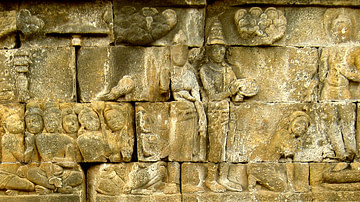
Definition
Bimbisara
Bimbisara (c. 545/544 BCE - c. 493/492 BCE) was a king of the Magadha Kingdom who is credited with establishing imperial dominance in the Indian subcontinent. Son of a minor king called Bhattiya, he belonged to the Haryanka Dynasty, which...
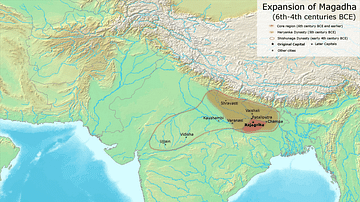
Definition
Magadha Kingdom
Magadha was an ancient kingdom located on the Indo-Gangetic plains in eastern India and spread over what is today the modern state of Bihar. At the height of its power, it claimed suzerainty over the entire eastern part of the country (roughly...

Definition
Shishunaga Dynasty
The Shishunaga Dynasty (also Sishunaga/Shaishunaga Dynasty) ruled the Magadha Kingdom in ancient India from c. 413 BCE to c. 345 BCE (in some sources from 421 BCE). It is said to be the third imperial dynasty of Magadha after the Brihadratha...
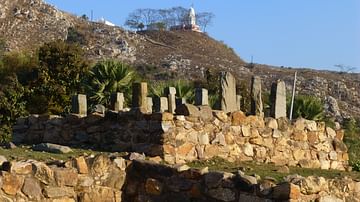
Image
Remains of Ajatashatru's stupa
The remains of the stupa that Ajatashatru built. 4th century BCE, Rajgir, Bihar, India
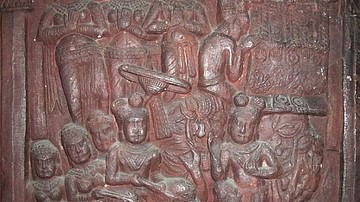
Image
King Ajatashatru Venerates the Buddha
King Ajatashatru Venerates the Buddha, from the Bharhut Stupa, c. 100-80 BCE.
Indian Museum, Kolkata.
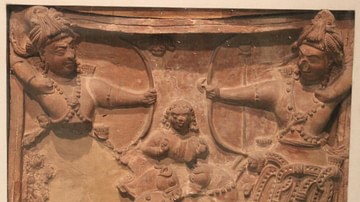
Definition
Ancient Indian Warfare
War was the chief means by which territory was annexed or rulers defeated in ancient India, which was divided into multiple kingdoms, republics and empires. Often one empire predominated or different empires co-existed. The Vedic literature...

Image
Royal Procession Leaving Rajagriha
Royal procession leaving Rajagriha, possibly depicting Ajatashatru (or Bimbisara) on a visit to the Buddha, significant because it shows the king, chariots and elephants and the components of a royal procession. 1st century BCE. Location...
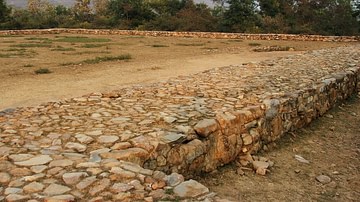
Image
Remains of the Jail where Bimbisara was Imprisoned
Remains of the jail where Bimbisara was imprisoned by Ajatashatru (this is the significance of the structure). 5th century BCE. Location: Rajgir (Rajagriha in Magadhan times), Bihar, India.